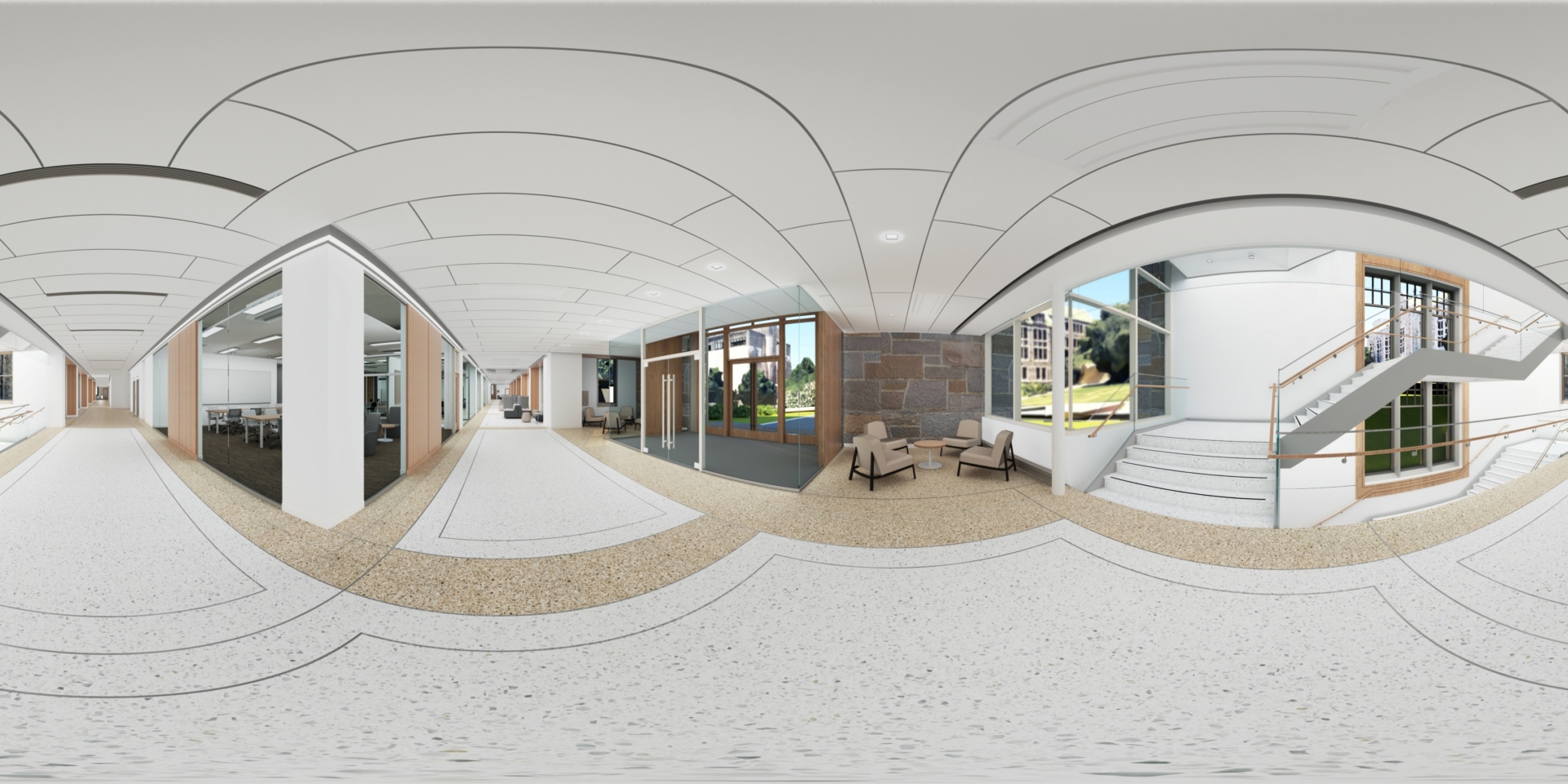The Boston College team at PAYETTE has been experimenting with 360 spherical panoramic renderings using Rhino and V-ray. The College was looking for a way to view the spaces we designed for them without the use of VR. To meet their needs, we created two 360-degree renderings for them to experience through a web link, versus using a VR model, allowing us to work more efficiently.
To view the renderings in 360, please click on the goggles in the lower right corner. You can press “Esc” to exit the 360 viewer.
Creating these images is very similar to using V-ray to render with Rhino: there is an option in the V-ray Asset Editor under settings to change the camera to a VR spherical panorama. Once the camera is switched, the render output becomes a spherical panorama. It is essential to choose the right location as the origin point of the rendering. For example, we selected an origin point at eye level that allowed the viewer to see down both of our corridors and into the vestibules. These details were important for the client to see, as well as for the team to look closely at design details and decisions. Once the renders were complete, we uploaded the images to our site via GitHub and added a code our 3D Visualization Team put together, and the spherical panoramas were ready for viewing.
It was important for our team to see our building through a different frame of reference; it helped us choose materials and make changes to our design. A 360-image allowed us to evaluate our walls, floors and ceilings, and how these elements joined and complimented one another. Our team found that 360 spherical panoramas are a great way to communicate ideas to the client without the need for VR and to allow them to imagine a space from an entirely new perspective.
Related Links:
A New Home for Interdisciplinary Studies at Boston College


